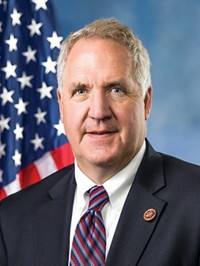Advertisement
Grab your lab coat. Let's get started
Welcome!
Welcome!
Create an account below to get 6 C&EN articles per month, receive newsletters and more - all free.
It seems this is your first time logging in online. Please enter the following information to continue.
As an ACS member you automatically get access to this site. All we need is few more details to create your reading experience.
Not you? Sign in with a different account.
Not you? Sign in with a different account.
ERROR 1
ERROR 1
ERROR 2
ERROR 2
ERROR 2
ERROR 2
ERROR 2
Password and Confirm password must match.
If you have an ACS member number, please enter it here so we can link this account to your membership. (optional)
ERROR 2
ACS values your privacy. By submitting your information, you are gaining access to C&EN and subscribing to our weekly newsletter. We use the information you provide to make your reading experience better, and we will never sell your data to third party members.
Policy
Risk Assessment
Proposed rule could further delay workplace health standards for many chemicals
by Britt E. Erickson
September 15, 2008
| A version of this story appeared in
Volume 86, Issue 37

ON THE FRIDAY before Labor Day weekend, the Department of Labor gave workers an unexpected gift—a proposal for a new risk assessment approach that critics say will make it more difficult for the next Administration to protect workers from exposure to hazardous chemicals. Labor sure timed that one well.
Labor unions, public health experts, and some members of Congress have been trying to stop the agency from issuing the controversial rule ever since it first surfaced on the White House Office of Management & Budget's (OMB's) website in July (C&EN, July 28, page 41). Despite receiving numerous letters asking for the withdrawal of the proposal, Labor went ahead and published it anyway.
Labor claims that the legislation will streamline how the Occupational Safety & Health Administration and the Mine Safety & Health Administration assess workers' risks of exposure to hazardous substances and promote public input into the rulemaking process.
It appears that Labor is intent on pushing the rule through during the Bush Administration. Many are calling the 11th-hour rule a bad idea and are criticizing the agency for introducing it so late in the game. Labor is accepting public comments on the proposed regulation until Sept. 29, but there's no telling when it will issue a final rule. For now, many workers are still being exposed to beryllium, silica, the popcorn butter-flavor chemical diacetyl (2,3-butanedione), and thousands of other toxic chemicals.
Critics argue that political appointees crafted the regulation in secret without any input from risk assessment experts. "While we applaud the expressed intent in the proposed rule to add transparency to the assessment of occupational health risks, we are concerned that the approach being used to progress this rule lacks transparency and bypasses or shortcuts significant stakeholder input," wrote Lindsay E. Booher, president of the American Industrial Hygiene Association, in an Aug. 25 letter to Labor Secretary Elaine L. Chao.
Those opposed to the rule also emphasize that it will provide more opportunities for industry to challenge worker safety rules. They argue that a requirement for an Advanced Notice of Proposed Rulemaking for all new occupational health standards will add years to the rulemaking process. Labor counters that it will add transparency to the process and allow more public input.
Some of the components of the proposed risk assessment rule are the same ones that OMB proposed in 2006 to streamline risk assessments across the federal government (C&EN, June 5, 2006, page 45). That proposal was ultimately shot down when the National Research Council (NRC) released a report in January 2007 calling it "fundamentally flawed."
Many are calling the 11th-hour rule a bad idea and are criticizing the agency for introducing it so late in the game.
In particular, the new proposal calls for uncertainty analysis, but it does not provide any guidance to the agencies on what assumptions they should make or how they should use incomplete data. On Aug. 14, a coalition of 80 scientists wrote a letter to Chao pointing out that the NRC report criticizes the same flaw in OMB's 2006 risk assessment proposal.
"Because risk assessors must rely on imperfect and incomplete data, decisions are informed by various guidance documents that are publicly available and publicly documented, and have been publicly vetted. Reliance on guidance documents helps to ensure that evaluations are consistent across substances and as objective as possible," the scientists wrote in their letter.
Also at issue is a change in the definition of a working life from up to 45 years to the average number of years worked for a particular industry. Although it is true that most people do not keep the same employer for 45 years, workers who change jobs often do not lower their risk of exposure because they typically stay in the same profession.
THE PROPOSED RULE also waters down the definition of an adverse effect such that only hazards associated with adverse health outcomes will be subject to regulation. In other words, as the American Public Health Association pointed out in a letter to Chao, the rule "is contrary to the most fundamental public health principle of prevention." In its 2007 report, NRC criticized OMB's definition of adverse effect for the same reason.
Just days before Congress left for its August recess, Rep. George Miller (D-Calif.), chairman of the House Education & Labor Committee, and other House Democrats introduced a bill, "Prohibiting the Department of Labor's Secret Rule Act" (H.R. 6660), which would prevent Labor from issuing the rule. "This entire effort is the product of a flawed, politicized process that has failed to properly consider the views of experts or the consequences for workplace health," Miller said in a written statement. The bill now sits waiting for the Education & Labor Committee to act on it. Workers shouldn't hold their breath, however, because members of Congress have little time to act before they recess to begin election campaigning and the next Administration takes over.
Views expressed on this page are those of the author and not necessarily those of ACS.




Join the conversation
Contact the reporter
Submit a Letter to the Editor for publication
Engage with us on Twitter